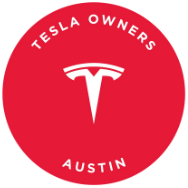The way it covers the glass roof in a blanket of white is magical. It’s like being inside a snow globe, but better because you can drive the snow globe around.
In conclusion, Tesla’s glass roofs are a fantastic feature that sets them apart from other cars on the market. While some may miss the option of a panoramic sunroof or a solid roof, the benefits of the glass roof in terms of structural integrity, aesthetics, and noise reduction make it a worthwhile trade-off. Plus, the open, airy feel and the ability to see the world around you while driving make the glass roof a unique and standout feature of Teslas. Whether you’re driving a Model S, Model 3, Model X, or Model Y, you can enjoy the beauty and practicality of Tesla’s advanced glass roofs.
It’s always best to park your Tesla in a garage or under cover during hailstorms to protect it from any potential damage. But rest assured, the Tesla glass roof is built to withstand a lot, including hail.
Final Thoughts
Tesla’s all-glass roof is not only aesthetically pleasing but also incredibly safe and durable. The glass panels are designed to block UV rays, withstand significant force, and provide a unique visual experience, especially when wet. The craftsmanship and technology behind Tesla’s glass roofs are truly remarkable, making them a standout feature of Tesla vehicles.
Whether you’re concerned about safety, heat resistance, or durability, the Tesla glass roof has you covered. With advanced materials and construction techniques, Tesla continues to innovate and set new standards for automotive design. So, sit back, enjoy the view through your glass roof, and trust that Tesla has your safety and comfort in mind every mile of the way.
Protecting Your Car from Hail Damage
If you live in an area where hail is a common occurrence, it’s important to take precautions to protect your vehicle from potential damage. One of the best ways to do this is by parking your car in a garage whenever possible. By keeping your car sheltered from the elements, you can significantly reduce the risk of hail damage.
When hail falls, it can range in size from small pellets to large chunks of ice, causing dents, scratches, and even cracks on your car’s exterior. These damages can be costly to repair and may affect the resale value of your vehicle. By parking in a garage, you can avoid these issues and keep your car looking its best.
If you don’t have access to a garage, consider investing in a car cover or finding alternative covered parking options, such as carports or parking structures. These measures can provide some protection against hail and other weather-related damage.
In addition to parking in a garage, you can also take proactive steps to minimize the risk of hail damage. Keep an eye on weather forecasts and try to park in a safe location if hail is expected. If you’re caught in a hailstorm while driving, pull over to a safe area and seek shelter until the storm passes.
By being vigilant and taking precautions, you can help protect your car from hail damage and preserve its appearance and value for years to come.
The world is constantly changing and evolving, and with it, so are the ways in which we interact with technology. In recent years, there has been a significant shift towards more advanced and innovative forms of technology, particularly in the realm of artificial intelligence (AI). AI has become an integral part of our everyday lives, from the way we communicate to the way we shop, work, and even travel.
One of the most exciting developments in AI technology is the rise of virtual assistants. These digital helpers are designed to assist users with a variety of tasks, from scheduling appointments to answering questions and providing recommendations. Virtual assistants are becoming increasingly sophisticated, thanks to advancements in machine learning and natural language processing. They are now capable of understanding and responding to complex commands and queries, making them more useful and intuitive than ever before.
Virtual assistants are already being integrated into a wide range of devices and applications, including smartphones, smart speakers, and even cars. They are designed to make our lives easier and more convenient, by automating routine tasks and providing personalized assistance. For example, virtual assistants can help us find information online, set reminders and alarms, and even control smart home devices such as thermostats and lights.
But the potential of virtual assistants goes far beyond simple convenience. They have the power to revolutionize industries such as healthcare, education, and finance, by providing personalized and accessible services to a wider audience. For example, virtual assistants can help doctors diagnose and treat patients more effectively, by analyzing medical records and providing real-time recommendations. They can also help students learn and study more efficiently, by offering personalized tutoring and feedback.
However, with great power comes great responsibility. As virtual assistants become more prevalent in our daily lives, concerns about privacy and security have also arisen. There is a risk that our personal data could be misused or exploited by malicious actors, leading to potential breaches of privacy and trust. It is crucial that developers and manufacturers of virtual assistants take steps to protect user data and ensure that their systems are secure and reliable.
In conclusion, virtual assistants represent a significant leap forward in the field of AI technology. They have the potential to revolutionize the way we interact with technology and provide valuable services to users across a wide range of industries. However, it is important that we proceed with caution and ensure that virtual assistants are developed and implemented in a responsible and ethical manner. With the right safeguards in place, virtual assistants have the power to enhance our lives and make the world a better place.
